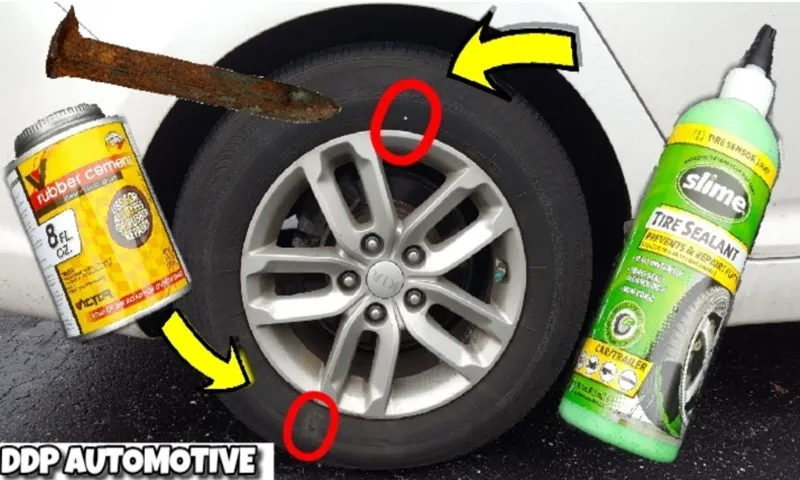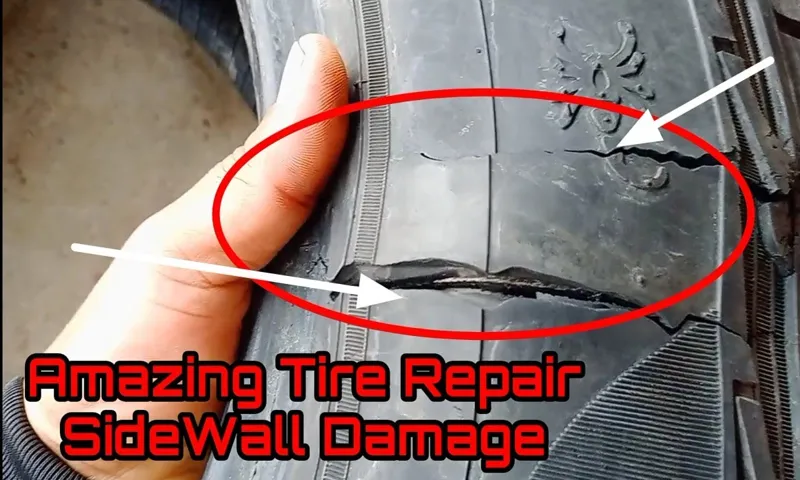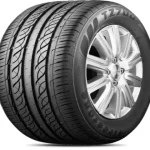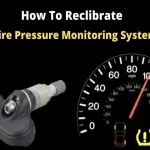Are you frustrated with having to replace your tires after encountering sidewall damage? Don’t worry, you’re not alone. Many drivers are unsure of what to do when they notice sidewall damage on their tires. Whether it’s a small crack or a deep gash, sidewall damage can be dangerous and cause serious problems on the road.
But fear not, we’re here to guide you through the process of fixing sidewall tire damage with our comprehensive guide. We’ll cover everything from the causes of sidewall damage to the steps you can take to prevent it from happening again. So, buckle up and let’s get started!
Table of Contents
Types of Sidewall Tire Damage
When it comes to tire damage, the sidewall is often overlooked but it is actually one of the most important parts of the tire. Sidewall damage can seriously compromise the structural integrity of the tire and even lead to blowouts. There are several types of sidewall tire damage to be aware of, including cuts, punctures, bulges, and sidewall separation.
Unfortunately, not all types of sidewall damage can be fixed and in some cases, a replacement may be necessary. However, if the damage is minor, it may be possible to patch or seal the puncture with the help of a professional. It is important to regularly inspect your tires for any signs of damage, including on the sidewalls.
If you do notice any damage or abnormalities, address them promptly for your safety on the road.
Cracks
When it comes to tire damage, sidewall cracks can be a common issue. These can occur due to a variety of reasons such as age, exposure to harsh weather conditions, and impact damage. The severity of the crack can vary from a shallow surface-level crack to a deep cut which can pose a safety hazard.
Sidewall tire damage can be broadly categorized into three types, including weather cracking, aging, and impact damage. Weather cracking is caused due to prolonged exposure to extreme weather conditions like sunlight, wind, and rain. This leads to the rubber in the sidewall becoming dry and brittle.
As a result, cracks start to appear on the surface, making the tire more prone to catastrophic failure. Aging is another factor that contributes to sidewall damage. As the tire ages, the rubber material starts to break down, losing its strength and resilience, which ultimately leads to cracks in the sidewall.
Additionally, as the tire ages, it becomes more vulnerable to damage from everyday wear and tear. Finally, impact damage is caused when the tire hits an object like a pothole, curb, or debris on the road. This can cause cuts and tears in the sidewall that can be shallow or deep, exposing the tire to further damage.
If you notice sidewall damage on your tire, it’s important to have it inspected by a professional as soon as possible. Depending on the severity of the damage, your tire may need to be replaced to ensure continued safety on the road.

Bulges
Bulges One of the most common types of sidewall tire damage is bulges. Bulges can be caused by a variety of factors, including overloading the vehicle, hitting a curb or pothole, and even low tire pressure. When a bulge appears, it is a sign that the tire is weakened, and it may not be safe to drive on.
This is because the bulge is a weak spot that can lead to a blowout, particularly when the tire is exposed to high speeds or hot temperatures. It’s critical to inspect your tires frequently, including the sidewalls, to detect any bulges or other types of damage. If you see a bulge on your tire, it’s advised to get it replaced as soon as possible to ensure your safety while driving.
Remember, your tires are the only part of your vehicle that touches the road, and driving on worn or damaged tires can put you and other drivers at risk.
Punctures
When it comes to types of sidewall tire damage, punctures are a common issue that can lead to serious problems if not addressed promptly. Punctures occur when a sharp object, such as a nail or piece of glass, penetrates the tire’s rubber material, causing it to lose air pressure. While some punctures can be repaired, others may be too large or located in the wrong area, making replacement the only option.
It’s important to inspect your tires regularly for signs of punctures, such as bulging, cracking, or cuts in the sidewall. In the event of a puncture, it’s crucial to take immediate action to prevent further damage and ensure your safety on the road. So, keep an eye out for any signs of damage, and if you spot anything, get it checked out by a professional to avoid any potential accidents or mishaps.
Assessing the Severity of the Damage
When fixing sidewall tire damage, the first step is to assess the severity of the damage. The sidewall is a critical part of the tire, and any damage to it must be approached with caution. If the damage is minor, such as a small puncture or scrape, it can usually be repaired with a tire patch or sealant.
However, if the damage is more severe, such as a large gash or bulge, the tire will need to be replaced. It is important to note that attempting to repair a severely damaged sidewall can be dangerous and could result in a blowout or other serious tire failure. In such cases, it is best to consult with a professional tire technician to determine the best course of action.
Always prioritize safety when dealing with tire damage and remember to always check your tires regularly to prevent damage from occurring in the first place.
Visual Inspection
Visual inspection is an essential step in assessing the severity of any damage to a structure or object. By closely examining the affected area, one can identify the extent of the damage, the potential causes, and the best course of action for repairs. When carrying out a visual inspection, it is crucial to be thorough and detail-oriented, as even small cracks or deformations can be indicative of more significant problems.
Additionally, it is important to take note of any patterns or recurring issues that may require further investigation. By using a careful eye and attention to detail, anyone can perform an effective visual inspection and gain valuable insights into the state of a damaged structure or object.
Pressure Test
The “pressure test” is a way to assess the severity of damage in a system. It is a common practice used in various industries, including oil and gas, manufacturing, and power generation, to ensure the safety and reliability of equipment and infrastructure. The test involves increasing the pressure beyond the normal operating range to evaluate the strength and capability of the system.
If the system withstands the pressure without any leaks or failures, it is considered to be in good condition. However, if there are signs of stress, deformation, or leakage, it indicates that there is damage to the system, and further inspection and repairs are needed. Overall, the pressure test is an essential tool for maintaining the integrity of critical systems and preventing accidents and downtime.
Temporary Repair Options
If you’ve encountered sidewall tire damage, there are a few temporary repair options you can try before replacing the whole tire. First, you can use a tire plug or sealant to fill the puncture and stop the air from escaping. However, keep in mind that these solutions are not permanent and may only buy you some time before needing a proper replacement.
Another option is using a sidewall reinforcement ring to stabilize the damaged area and prevent further damage. It’s essential to note that this fix is only viable for certain types of sidewall damage and may not work for severe punctures or cuts. Ultimately, it’s crucial to ensure your safety on the road, and a compromised tire can put you and other drivers at risk.
Thus, it’s recommended to replace the damaged tire as soon as possible, especially if the damage is extensive or affecting the tire’s structural integrity.
Rubber Patch
Sometimes, unexpected mishaps happen while you’re on the road, and one of the worst is a flat tire. A tiny puncture or gash in your tire can easily turn into a significant problem if you don’t address it quickly. A rubber patch is one option if you find yourself in this situation and don’t have a spare tire on hand.
This option is a temporary fix that can help you get to the nearest mechanic or service station. However, it is critical to note that a patch is not a permanent solution and should only be used as a stopgap measure. A rubber patch can be placed on the exterior or interior of a tire and will provide a temporary seal to the puncture.
This method is relatively simple and affordable but requires the proper tools and knowledge to complete correctly. Nonetheless, once the patch is in place, it can hold enough air pressure to allow you to drive to the nearest service station safely.
Tire Sealant
Tire sealant is a quick and temporary repair option that can be a lifesaver in emergency situations. It’s a liquid that’s injected into the tire through the valve stem and coats the inside of the tire, sealing small punctures. This method is great for small leaks or punctures under ¼ inch.
Tire sealant could be a valuable addition to your trunk for unexpected emergencies. It’s essential to remember that tire sealant is not a long-term solution and should only be utilized as a temporary repair option. Ensure to get your tire repaired immediately by a professional to prevent any significant damage.
Nonetheless, tire sealants are reliable, inexpensive, and can help you get back on the road in a pinch.
Permanent Repair Options
When it comes to fixing sidewall tire damage, there are a few permanent repair options available to help you get back on the road safely. One popular solution is using a sidewall panel patch kit, which involves applying a patch to the inside of the tire, covering the damaged area. Another option is a sidewall plug, which involves drilling a hole through the tire and inserting a plug to fill the damaged area.
While both of these options can be effective, it’s important to understand that they are not suitable for all types of sidewall damage and may void your tire’s warranty. In some cases, the best option may be to replace the damaged tire altogether. No matter which method you use, it is crucial to have the repair done by a qualified professional to ensure maximum safety and effectiveness on the road.
So if you notice any sidewall damage on your tire, don’t hesitate to take action and get it fixed to avoid further damage and potential accidents.
Sidewall Replacement
When it comes to replacing damaged sidewalls on your vehicle, there are a variety of permanent repair options available. One common method is to replace the entire sidewall panel, although this can be an expensive and time consuming process. Another option is to use a sidewall repair kit, which typically includes a patch that can be applied to the damaged area.
This option is more cost-effective and can be done relatively quickly, but it may not be as durable as a full panel replacement. It is important to consider the extent of the damage to your sidewall and the overall condition of your vehicle before deciding on a repair method. Consulting with a professional repair technician can also provide valuable insight and advice on the best course of action for your particular situation.
Tire Replacement
When it comes to tire replacement, many drivers are faced with the dilemma of whether to go for a permanent or temporary fix. Permanent repair options can include tire patches or plugs, both of which offer a long-lasting solution. A patch involves applying rubber to the inside of the tire, while a plug is inserted into the puncture hole and sealed with glue.
Both methods are effective in sealing the tire and preventing air leaks, but it’s important to note that they may not be appropriate for all types of damage. For example, if the puncture is too close to the sidewall or if the tire has sustained significant damage, it may be necessary to replace the tire entirely. In such cases, a temporary fix such as using a spare tire can suffice until a new tire can be purchased.
Whatever the case may be, it’s important to consult with a trusted auto mechanic or tire specialist who can assess the damage and offer the best solution.
Tips for Preventing Sidewall Tire Damage
If you’re looking for ways to prevent sidewall tire damage or how to fix it when it happens, you’ve come to the right place. One of the easiest ways to prevent sidewall damage is to ensure that your tires are properly inflated. Overinflated or underinflated tires can cause your sidewalls to bulge out or flex too much, which can lead to cracks or tears.
Another tip is to avoid hitting curbs or potholes as much as possible. When you come into contact with these hazards, it can cause cuts, slashes, or punctures in your sidewall. If you do end up dealing with sidewall damage, remember that repairs to this area of your tire may not be possible.
It’s best to replace the tire entirely to ensure your safety on the road. So, make sure to maintain your tire pressure, avoid hazards, and replace any damaged tires to prevent sidewall damage and keep you and your passengers safe.
Proper Tire Inflation
Proper Tire Inflation One of the best things you can do to prevent sidewall tire damage is to ensure your tires are properly inflated. Underinflated tires can result in excessive flexing of the sidewalls, which in turn can cause the rubber to weaken and eventually crack. On the other hand, overinflated tires can cause the tire to lose its grip on the road, making it more prone to damage from bumps and potholes.
To prevent this, make sure you regularly check and correctly inflate your tires to the recommended pressure levels listed in your owner’s manual or on the tire placard. By maintaining proper tire inflation, you can help reduce the risk of sidewall damage and prolong the life of your tires.
Avoiding Potholes and Obstacles
Driving on roads with potholes and obstacles can be a nuisance, especially when it comes to damaging your tires. One of the common tire damages that come from hitting potholes and obstacles is sidewall tire damage. This can be prevented by ensuring your tires have the right air pressure and avoiding driving on roads with excessive potholes and obstacles.
Moreover, consider avoiding sudden turns and braking that can exert unnecessary pressure on your tires, leading to sidewall damage. Additionally, inspect your tires regularly for any signs of wear and tear that could cause damage while driving. By taking these preventive measures, you can ensure your tires are not only in good condition but last longer, reducing the need for frequent replacements.
Remember, investing in road safety is a small price to pay compared to the cost of replacing damaged tires frequently.
Regular Tire Maintenance
Regular tire maintenance is crucial for ensuring the longevity and safety of your tires. Sidewall tire damage is a common issue that can lead to blowouts and other hazards on the road. Here are some tips to prevent sidewall tire damage:
Keep your tires properly inflated. Underinflated tires can cause excessive flexing of the sidewall, leading to damage over time.
Avoid hitting curbs or other obstacles that can scrape or puncture the sidewall. Drive carefully and be aware of your surroundings.
Inspect your tires regularly for signs of damage, including bulges, cuts, and cracking. If you notice any issues, have them checked out by a professional as soon as possible.
Choose high-quality tires that are designed to resist damage. Look for tires with reinforced sidewalls or other features that can help prevent punctures and other forms of damage. By following these tips, you can help prevent sidewall tire damage and keep your tires in top condition for longer.
Remember to always prioritize safety on the road and take care of your tires through regular maintenance.
Final Thoughts
In conclusion, fixing sidewall tire damage can be a hassle, but it’s definitely necessary to ensure your safety on the road. While there are a variety of methods suggested, the only reliable fix is replacing the damaged tire completely. To avoid these issues altogether, be sure to regularly check your tire pressure and tread depth, as well as avoid driving over debris and potholes as much as possible.
By taking these precautions, you can help prevent sidewall tire damage and keep your vehicle running smoothly. Remember, safety should always be a top priority when it comes to driving, so don’t hesitate to address any tire issues you may encounter.
Conclusion
In the end, fixing sidewall tire damage requires some elbow grease and a bit of ingenuity. While you may initially feel deflated about the situation, don’t let that stop you from finding a solution. Whether it’s using a patch kit or seeking professional help, there’s always a way to put some air back in your tires and get moving again.
Just remember to tread carefully and keep an eye out for any bumps in the road ahead!”
FAQs
What causes sidewall tire damage?
Sidewall tire damage can be caused by hitting a curb, driving over sharp objects, or running over potholes.
Can sidewall tire damage be repaired?
No, sidewall tire damage cannot be repaired. The tire must be replaced.
How can I prevent sidewall tire damage?
Maintaining proper tire inflation, avoiding hitting curbs or driving over potholes, and regularly inspecting your tires for any signs of damage can help prevent sidewall tire damage.
How long does it take to replace a sidewall tire?
The time it takes to replace a sidewall tire can vary, but typically it can take around 30 minutes to an hour.
Can I replace just one sidewall tire or do I need to replace both?
It is recommended to replace two tires at a time to ensure even wear and proper handling.
What are the consequences of driving on a damaged sidewall tire?
Driving on a damaged sidewall tire can lead to a blowout or a flat tire, which can be unsafe and result in an accident.
How do I know if my tire damage is on the sidewall or not?
Sidewall damage can be identified by visually inspecting the side of the tire. It is typically indicated by bulges, cuts, or punctures on the side of the tire.



